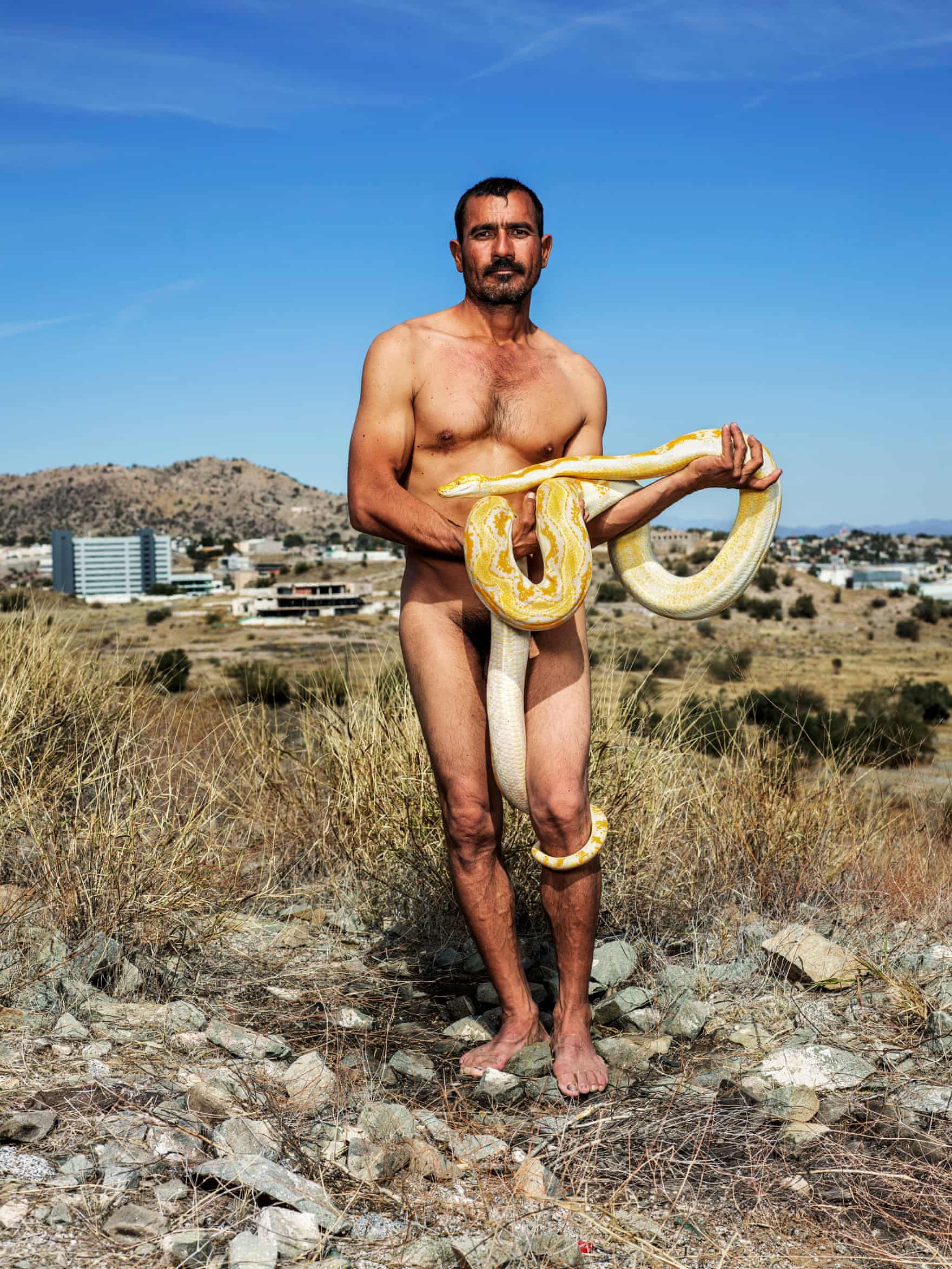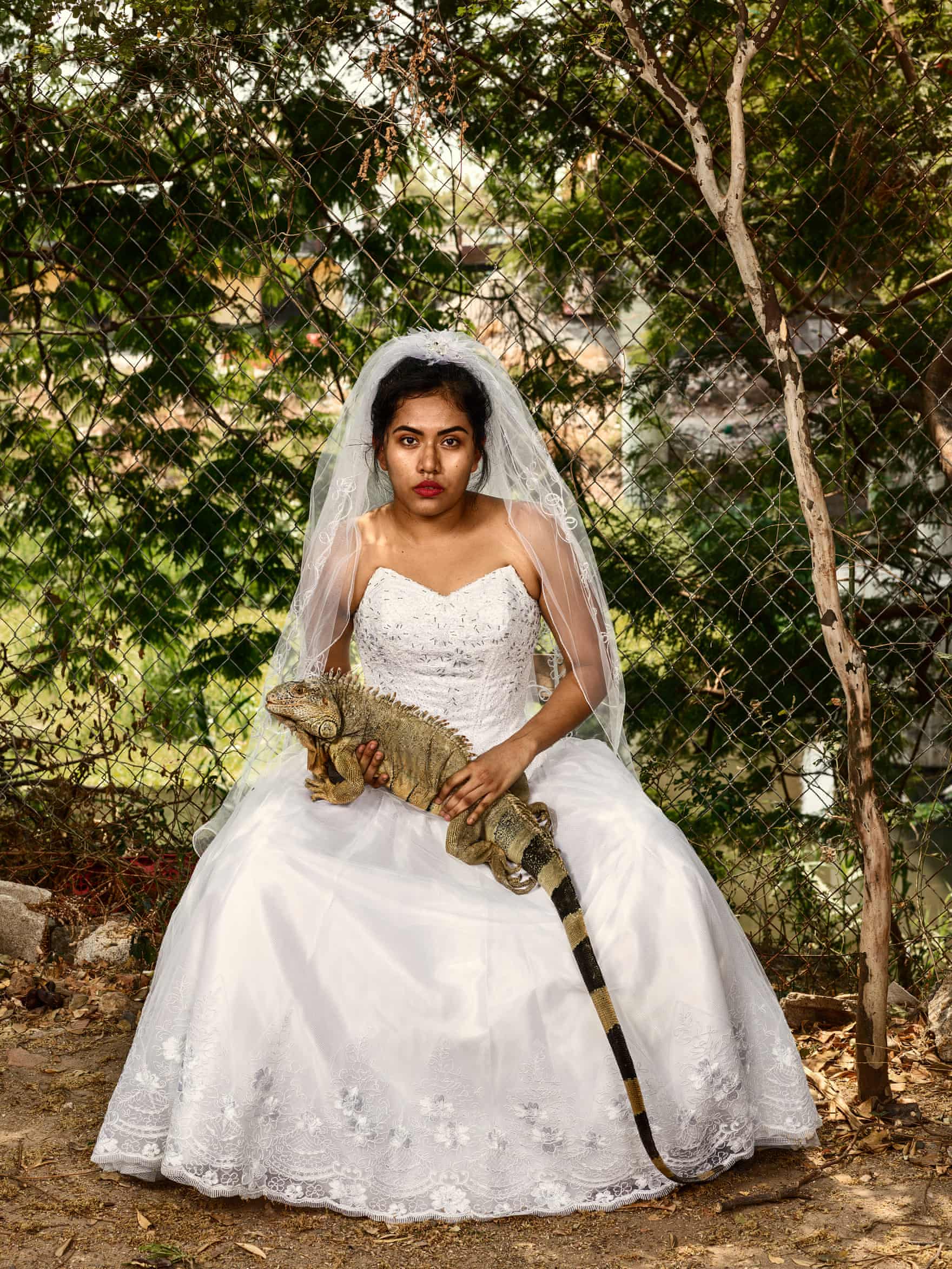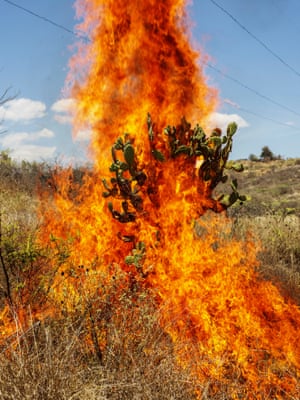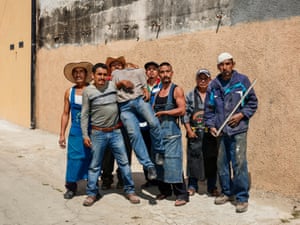
The Snake Charmer, Hermosillo, 2019. Photograph: Pieter Hugo
The series reflects the artist’s long-standing interest in how history and environment can shape a culture and those living within it. Hugo looks both to rituals of rites of passage, and their associated formal codes of conduct and dress, and also the wider rituals of religion, theatre and community. In this series, he specifically looks to the impact on the physical body, creating powerful portraits that focus on tattoos, jewellery, sweat and scar
Named after the famous folk song which translates as The Cockroach, La Cucaracha is an exhibition of new photographs by South African artist Pieter Hugo exploring death, sexuality and spirituality in Mexico
Pieter Hugo: La Cucaracha is at Huxley-Parlour Gallery, London, from 19 February to 14 March.
All pictures © Pieter Hugo
The Wedding Gift, Juchitán de Zaragoza, 2018
The extraordinary and the everyday jostle for attention in the South African photographer’s examination of Mexican culture. This image shows a young bride in Juchitán de Zaragoza cradling an iguana, a creature considered a symbol of patience, understanding and kindness in Mexico. Read more on this image by Sean O’Hagan
The series reflects the artist’s long-standing interest in how history and environment can shape a culture and those living within it. Hugo looks both to rituals of rites of passage, and their associated formal codes of conduct and dress, and also the wider rituals of religion, theatre and community. In this series, he specifically looks to the impact on the physical body, creating powerful portraits that focus on tattoos, jewellery, sweat and scar
Named after the famous folk song which translates as The Cockroach, La Cucaracha is an exhibition of new photographs by South African artist Pieter Hugo exploring death, sexuality and spirituality in Mexico
Pieter Hugo: La Cucaracha is at Huxley-Parlour Gallery, London, from 19 February to 14 March.
All pictures © Pieter Hugo
The Wedding Gift, Juchitán de Zaragoza, 2018
The extraordinary and the everyday jostle for attention in the South African photographer’s examination of Mexican culture. This image shows a young bride in Juchitán de Zaragoza cradling an iguana, a creature considered a symbol of patience, understanding and kindness in Mexico. Read more on this image by Sean O’Hagan

Burning Bush, Oaxaca de Juárez, 2018 For this series, Hugo has drawn on Mexican history, as well as cultural, art historical and literary references, such as the mural From the Dictatorship of Porfirio Diaz to the Revolution (1957-66) by Communist artist David Alfaro Siqueiros. While referencing Mexico’s rich visual culture, Hugo’s work attempts to investigate how ritual, tradition and community inspire the complex reconciliation between the extremes of life and death.

After Siqueiros, Oaxaca de Juárez, 2018
Recreation of a scene from David Alfaro Siqueiros’ mural Del Porfirismo a la Revolución (1957-1966) O’Hagan writes: ‘In Hugo’s Mexican portraits, the mood moves between the heightened everyday and the grotesque: weatherbeaten peasants in work clothes, a woman dressed like Frida Kahlo, corpulent nudes, blood-covered faces and a man wearing a crown of thorns. Nothing is ever entirely what it seems, the complex nature of Mexican culture reflected through an outsider’s eyes as a mixture of ritual, role-playing and various degrees of exaggerated reality’
After Siqueiros, Oaxaca de Juárez, 2018
Recreation of a scene from David Alfaro Siqueiros’ mural Del Porfirismo a la Revolución (1957-1966) O’Hagan writes: ‘In Hugo’s Mexican portraits, the mood moves between the heightened everyday and the grotesque: weatherbeaten peasants in work clothes, a woman dressed like Frida Kahlo, corpulent nudes, blood-covered faces and a man wearing a crown of thorns. Nothing is ever entirely what it seems, the complex nature of Mexican culture reflected through an outsider’s eyes as a mixture of ritual, role-playing and various degrees of exaggerated reality’

No comments:
Post a Comment